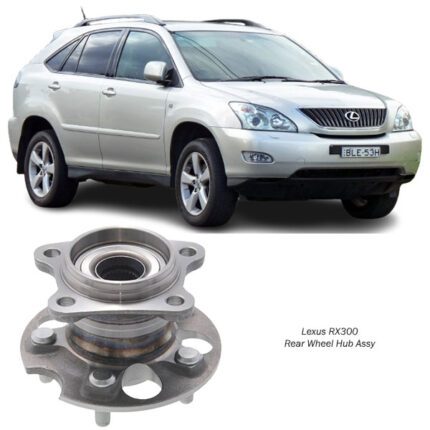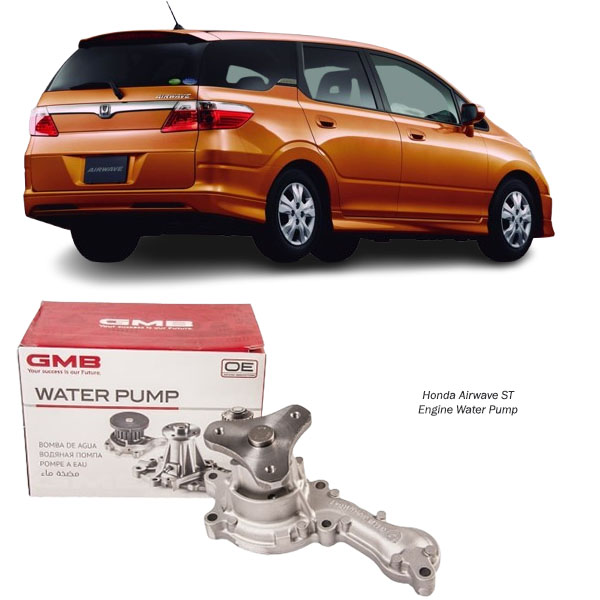-7%
Get Honda Airwave Engine Water Pump Assy GWHO-47A in Kenya
The engine water pump assembly is one of the most critical components of your vehicle’s cooling system. Whether you drive a Toyota Prado 120/150, Nissan Note, Wingroad, Tiida, or any other vehicle, the water pump plays a crucial role in preventing engine overheating and ensuring efficient engine operation.
A failing water pump can lead to severe engine damage, overheating, and costly repairs. In this guide, we will cover what an engine water pump does, why it’s important, signs of failure, types of water pumps, maintenance tips, and how to replace it.
What Is an Engine Water Pump Assembly? 🤔
The engine water pump assembly is a mechanical device responsible for circulating coolant through the engine, radiator, and cooling system. It ensures that the engine remains at an optimal operating temperature by pumping coolant through the system.
Main Functions of a Water Pump:
🔹 Circulates Coolant – Moves coolant through the engine and radiator.
🔹 Prevents Overheating – Regulates engine temperature for smooth operation.
🔹 Ensures Engine Longevity – Reduces wear and tear due to overheating.
🔹 Works With the Thermostat – Helps maintain the right temperature balance.
Without a properly functioning water pump, the engine temperature will rise, leading to overheating, head gasket failure, and possible engine seizure.
How Does an Engine Water Pump Work? ⚙️
The water pump is driven by the engine’s accessory belt, timing belt, or timing chain. It contains an impeller (a spinning fan-like component) that forces coolant to circulate through the cooling system.
Coolant Circulation Process:
1️⃣ Coolant flows from the radiator to the water pump.
2️⃣ The water pump impeller pushes the coolant into the engine block.
3️⃣ Coolant absorbs heat from the engine and flows to the radiator.
4️⃣ The radiator cools the hot coolant using air circulation.
5️⃣ The process repeats, maintaining a balanced engine temperature.
If the water pump fails, the coolant stops flowing, and the engine temperature rises rapidly, leading to serious damage.
Why Is the Engine Water Pump Important? 🚘
Your engine produces a lot of heat while running. If this heat is not controlled, it can lead to thermal expansion, cracked engine blocks, and complete engine failure.
A properly functioning water pump assembly ensures:
✔️ Efficient Cooling System Operation – Maintains an optimal temperature range.
✔️ Engine Performance & Longevity – Prevents overheating-related wear and tear.
✔️ Fuel Efficiency – Keeps engine components running smoothly.
✔️ Reduced Emissions – Prevents excessive fuel burning due to overheating.
Regular water pump maintenance and timely replacement can save you from costly engine repairs.
Signs of a Failing Engine Water Pump 🚨
Water pumps typically last between 100,000 – 150,000 km, but they can fail prematurely due to wear, leaks, or contamination. Here are some common warning signs that your water pump needs attention:
🔧 Coolant Leaks – Look for puddles of coolant under your car.
🌡️ Engine Overheating – Rising temperature gauge or warning light.
💦 White Smoke from Exhaust – Indicates coolant burning inside the engine.
🚗 Grinding or Whining Noise – Worn-out water pump bearings.
🔴 Coolant Low Warning Light – If coolant levels drop frequently.
🌀 Rust or Corrosion on the Pump – Indicates internal leaks or contamination.
Ignoring these symptoms can lead to severe engine damage and costly repairs.
Common Causes of Water Pump Failure ❌
Several factors can cause premature water pump failure:
🔹 Coolant Contamination – Dirt or rust in coolant can wear out the pump.
🔹 Old or Worn-Out Bearings – Causes noise and impeller failure.
🔹 Belt Tension Issues – Too much or too little tension can damage the pump.
🔹 Leaking Gasket or Seals – Leads to coolant leaks and inefficient cooling.
🔹 Using the Wrong Coolant – Some coolants cause corrosion inside the pump.
Using high-quality coolant and checking the pump regularly can help prevent premature failure.
Types of Engine Water Pumps 🔧
There are two main types of water pumps used in vehicles:
1️⃣ Mechanical Water Pumps
✔️ Driven by a belt (timing belt or serpentine belt)
✔️ Common in most vehicles
✔️ Reliable but requires periodic replacement
2️⃣ Electric Water Pumps
✔️ Found in hybrid and high-performance vehicles
✔️ Operates independently of engine speed
✔️ More efficient but expensive to replace
For Toyota Prado 120/150, Nissan Note, Wingroad, and Tiida, a mechanical water pump is most commonly used.
How to Replace an Engine Water Pump – Step-by-Step Guide 🛠️
Replacing a water pump is a complex job, especially in vehicles where it’s connected to the timing belt.
Tools & Materials Needed 🔧
✔️ New water pump assembly (OEM or high-quality aftermarket)
✔️ Coolant (recommended for your vehicle)
✔️ Wrenches and sockets
✔️ Drain pan for old coolant
✔️ Gasket sealant (if required)
Replacement Process 🔩
1️⃣ Drain the Coolant – Remove the radiator cap and drain the system.
2️⃣ Remove the Drive Belt – Loosen the serpentine or timing belt.
3️⃣ Unbolt and Remove the Old Water Pump – Inspect for damage.
4️⃣ Clean the Mounting Surface – Ensure a proper seal.
5️⃣ Install the New Water Pump – Secure it with bolts.
6️⃣ Refill the Cooling System – Add fresh coolant.
7️⃣ Bleed the System – Remove air pockets by running the engine.
8️⃣ Check for Leaks – Ensure everything is sealed properly.
💡 Tip: If the water pump is part of the timing belt system, it is best to replace the timing belt at the same time to save labor costs.
OEM vs Aftermarket Water Pumps 🏁
When replacing a water pump assembly, you have two options:
🔹 OEM (Original Equipment Manufacturer):
✔️ Direct fit and high-quality materials
✔️ Meets factory specifications
✔️ More expensive but long-lasting
🔹 Aftermarket Water Pumps:
✔️ Available from various brands
✔️ Some offer performance improvements
✔️ Quality varies – Choose trusted brands
For Toyota Prado 120/150, Nissan Note, Wingroad, and Tiida, OEM water pumps provide the best reliability.
Maintenance Tips for a Long-Lasting Water Pump 🏎️
To extend the lifespan of your water pump, follow these maintenance tips:
✅ Flush the Coolant Every 50,000 km – Prevents contamination buildup.
✅ Use the Correct Coolant – Always use manufacturer-recommended coolant.
✅ Inspect Belts Regularly – Ensure proper tension to avoid excess wear.
✅ Check for Leaks Often – Spotting small leaks early prevents major issues.
✅ Replace the Water Pump with the Timing Belt – Saves on labor costs.
A well-maintained water pump ensures smooth engine operation and prevents overheating.
Final Thoughts 💭
The engine water pump assembly is a vital component of your vehicle’s cooling system. Keeping it in good condition prevents overheating, engine damage, and costly repairs.
Follow us on Facebook for more parts.



